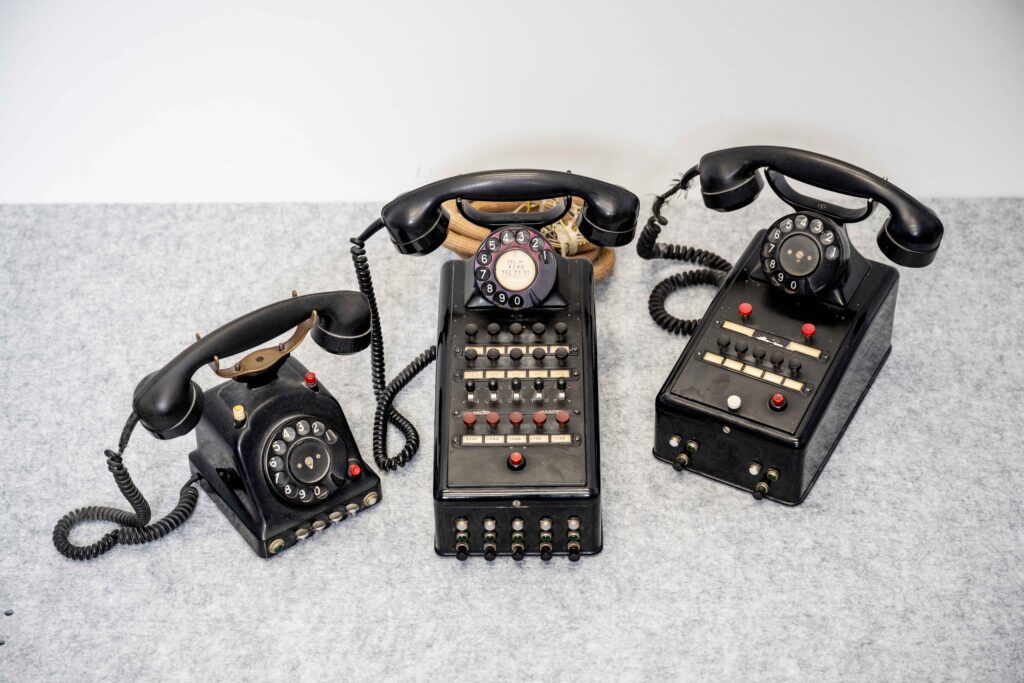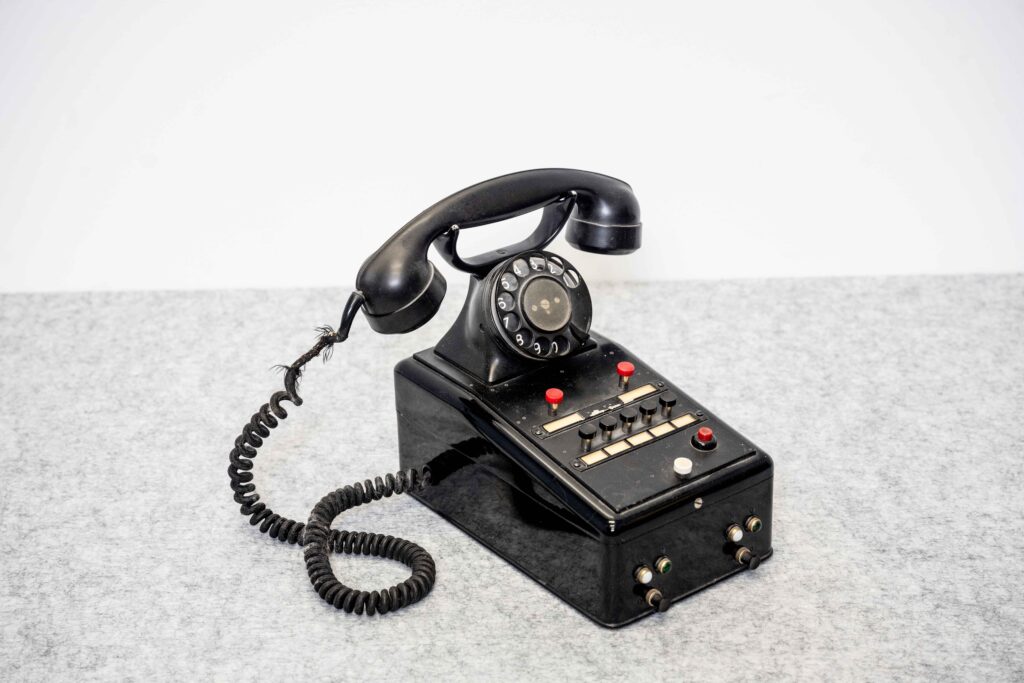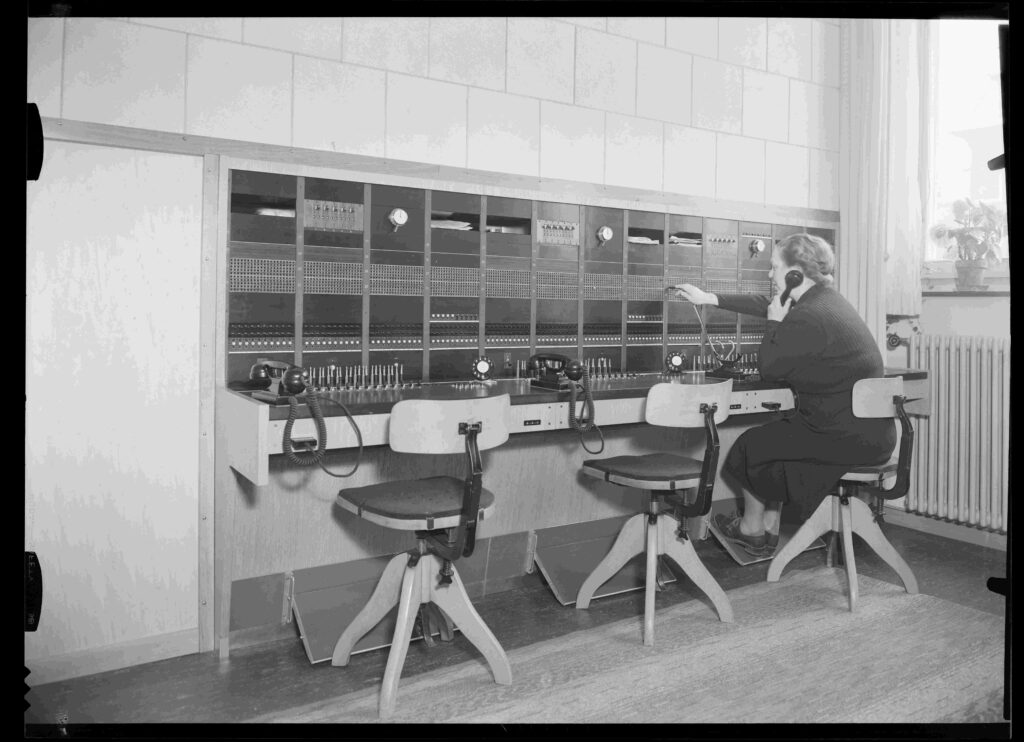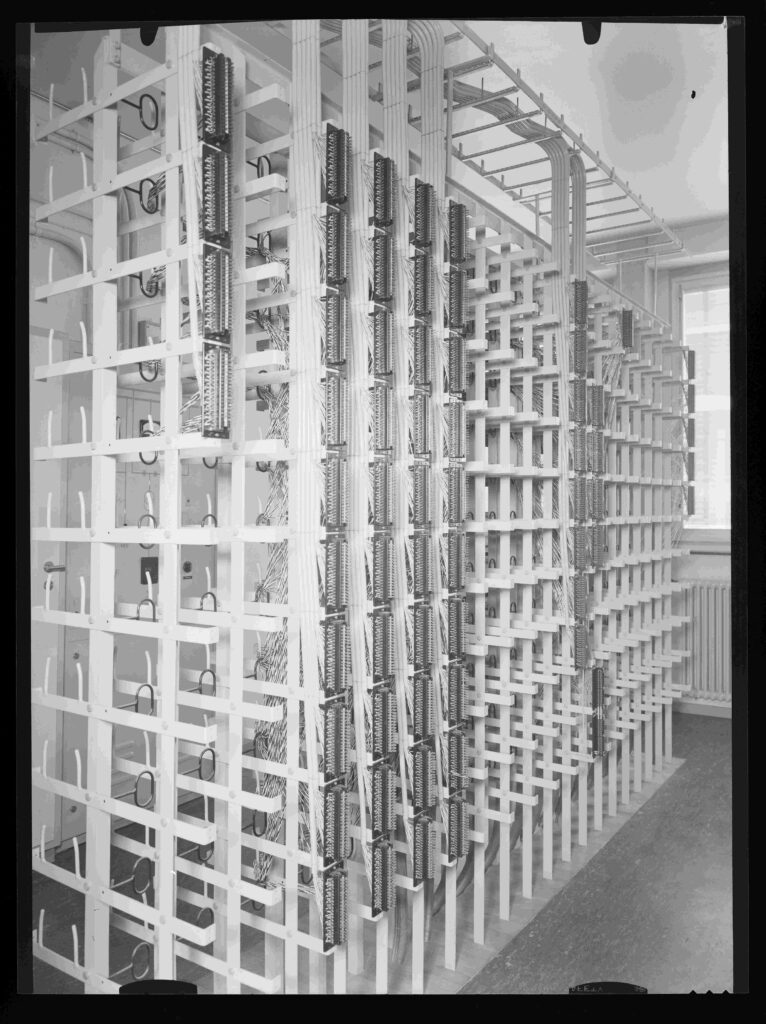IT Finds Series 2/2024: Do you know your stuff?
Join us on a journey into the past: How familiar are you with telephony at ETH Zurich and with old analogue telephones, and what do you personally associate with these devices? Tell us your story!

A line selector or line finder is an electromechanical device that was used in older telephone networks
The line selector is essentially a mechanical switch that was used to select a free telephone line and establish a connection between the calling and called parties. Line selectors are no longer used in modern telephone networks. Instead, digital exchanges and IP technology are used to switch telephone calls and enable communication.
What is the purpose of the two red buttons at the top?

Electromechanical line selector system for 2 exchange lines and 5 house lines. From any branch station, any other one can be reached directly without an operator by simply pressing a button
Each red button on the line selector was a specific connection and therefore also a telephone number. If it had two red buttons, there were two numbers and so on. The buttons at the bottom on the front of the telephone were what we now call a «hold call» function. If someone else called, you had to either twist or pull the buttons. It was not possible to someone call back. If you missed a call, you could neither see nor track the number. The volume of the phone could not be changed. There was only one basic setting.
In old telephones, especially in rotary dial telephones, the red buttons had a specific function known as «flash». The red button was also known as the «flash button». The button was used to trigger a special signal or action during a telephone call. If you pressed the flash button during a call, a short pulse was sent to the switchboard or exchange. This pulse duration varied depending on the country and telephone network, but usually lasted only a few milliseconds.
Our history
Last year we read «175 years ago: Bell and the telephone» and were curious to find out what ETH’s beginnings with these old telephones looked like. We then began researching telephones at ETH. Shortly afterwards, we were looking for old telephones to be included in the inside|out newsletter.
René Müller, employee at ITS INFRA, was the trigger for our IT Find quiz. His words: «Press, listen, feel: What a difference to plastic and electronics». You can also see the first and second «IT Finds» quizzes in the ITS blog. Thanks to René for the loan and support. These old telephones can also be seen in the 29th issue of inside|out – December 2022.
ETH history
The Swiss Federal Institute of Technology Zurich was founded in 1855. In the early years, the telephone system was mainly used for business purposes and communication within ETH. With the increasing spread of telephones among the population, telephones gradually became an important communication infrastructure in all universities.
Telephone switchboard
In the past, every telephone call had to be routed manually via a telephone exchange or switching centre. The telephone exchange was equipped with many sockets and connecting cables that led to the various telephone lines. This process of manual switching was gradually replaced by automatic exchanges and digital telephone systems that automatically establish the connection and automatically transmit the dialling tone or ring signal. Modern telecommunication systems are primarily based on digital signal processing and automatic switching, which makes communication more efficient and faster.
See also the anniversary post by Irene Furrer in the ITS Blog (in German).
The end points of the cables were always in the same location until September 1993: either at the exchange office in the HG (or main building), or at the exchange office in the HPV (Hönggerberg) building. Further exchanges were then added in the ETZ and Schlieren locations; later there were 21 at the Zurich location and four at the external locations (Basel, Lugano, Schwerzenbach, Lindau-Eschikon).

Zurich, ETH Zurich, Institute für Schwachstrom- und für Hochfrequenz-Technik (Institute for Low Current and High Frequency Technology) (ETF), Institute for Telecommunications Technology, telephone exchange, dated 25 March 1952: Source E-Pics image archive, ETH Library

Telephone system at ETH Zurich, photographer: unknown, Museum of Communication, dated 23 January 1952
In 1993, the old telephone exchange was replaced by the new exchanges (digital generation). The first VoIP trials were launched in 2009. There were some problems here initially, due to the various providers and the networks, which repeatedly caused problems.
Your story
What do you associate with these old telephones? Do you still have them, or do you still have old pictures, for example, from the time they were used at ETH? We look forward to your stories and comments on this post. And if you have an IT Find for our inside|out section, please contact us.
We found almost nothing about the history of telephones at ETH Zurich on the ETH websites – neither at ePics, the ETH library archive, the image archive, the collection of scientific instruments and teaching aids, nor the ETH Zurich university archive. If you have any further information or pictures, please feel free to contact us. Other interesting links on the subject of telephony:
- «IT Finds Series 1/2024: Are you familiar with old telephones?» (ITS Blog)
- «It Finds Series 3/2023: Are you familiar with old telephones?» (ITS Blog)
- Line selector (Swiss-Phones)
- Old historical telephones (TelephonMuseum collection)
- «The introduction of the telephone in Switzerland» (TelephonMuseum )
- Short films: Telephone exchange, telephone set etc. (TelephonMuseum )
- «175 years ago: Bell, March and the telephone» (IT history inside IT)
- History of the Museum of Communication (Website)
Informatiktage 2024
Thanks to the ITS team who offered the guided tours «Telephony – then and now» during the Informatiktage open days at ETH.
History / ITS & ETH write history
- Previous IT Finds to have a guess
- More on the ITS & ETH story in the ITS Blog and on the ETH website
Contact
Your inside|out editorial team, Sabine Hoffmann, Head of PR & Communications
erstellt am
in News


